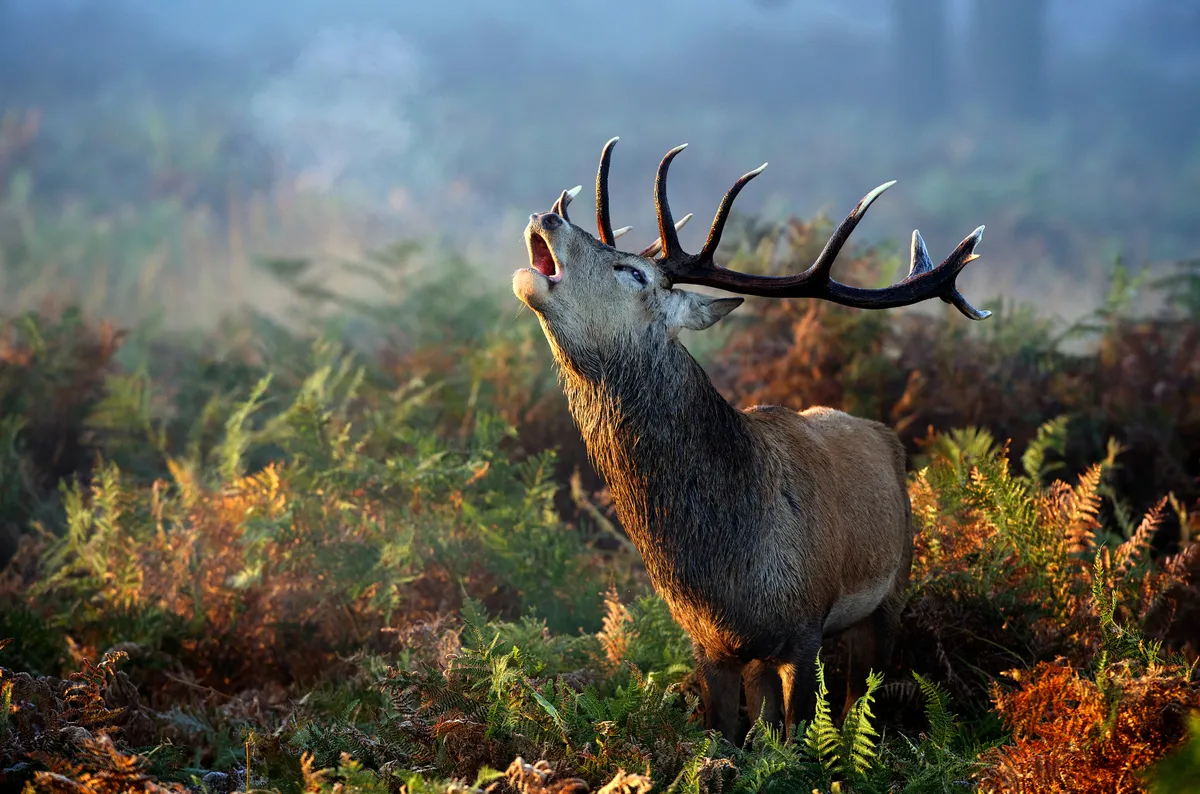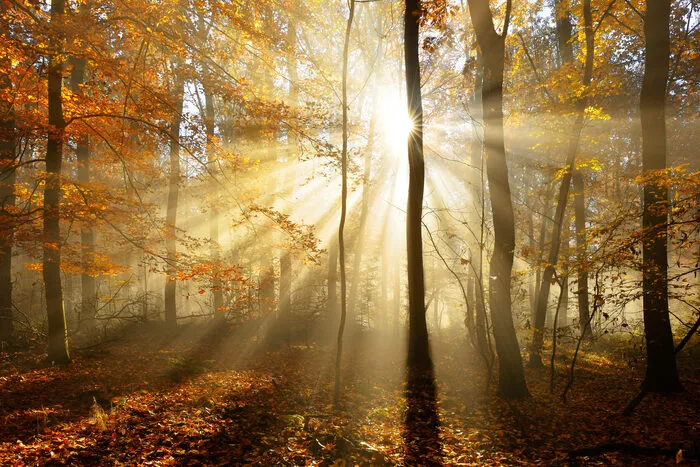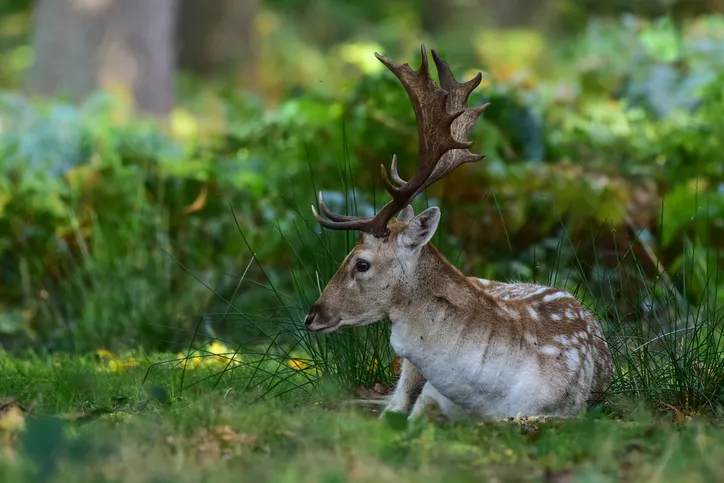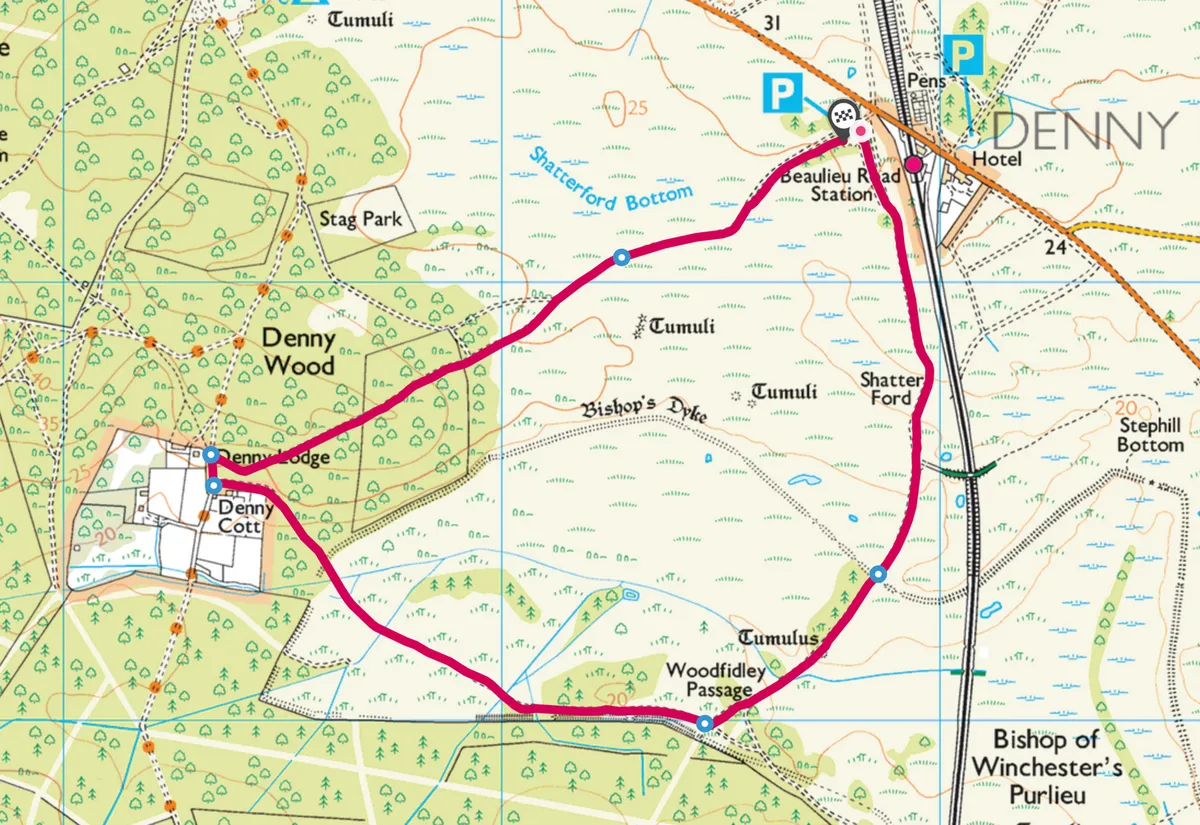If there’s one thing the New Forest really isn’t, it’s “new.” It was set aside by William the Conquerer as long ago as 1079 as his Nova Foresta, a royal hunting ground for his beloved deer which he was said to love “as if he were their father.”
The New Forest National Park, with its rich mosaic of heathland, oak and beech woodlands, hasn’t changed that much since William and his nobles hunted there over nine centuries ago. And it’s one of my favourite places in the country for an autumn walk.

Nowhere in England has such a variety of native and ornamental trees, which are seen at their best when autumn paints their leaves into a kaleidoscope of different colours. Add the swathes of royal-hued heather still found in the forest’s rare lowland heaths, and you have a near-perfect picture of an English autumn.
Animal life abounds at this time of the year too, as the herds of bellowing “belling” red and fallow deer stags start their annual rut, and the frisky New Forest ponies are gathered in “drifts” for their annual sales in the pens at Beaulieu Road Station, in the very heart of the forest. Taking place in September, October and November, the pony sales are also a highlight of the New Forest’s social year, when the commoners, verderers (the officials who look after the ponies and other livestock) and agisters (employed by the verderers) gather to buy and sell their ponies – and to catch up on the year’s news.

Denny Wood walk
3 miles/4.5km | 1.5 hours | easy
1. Bournemouth-Waterloo railway line
My easy, three-mile autumnal walk starts from here on the B3056 three miles south of Lyndhurst. Head due south, parallel with the Bournemouth-Waterloo railway line, crossing the open heathland of Shatterford and noting the slightly raised mounds of a couple of 4,000-year-old Bronze Age tumuli (burial mounds) away to your right.
2. Purlieu
As the path swings slightly to the south-west, you cross the insignificant banks and ditches of the Bishop’s Dyke to enter what is known as the Bishop of Winchester’s Purlieu. At purlieu, a name which comes direct from the Norman French, denotes an area adjoining a forest which was once part of it and then disafforested. The boundaries had to be walked (or perambulated) to establish its limits.
The local legend is that John de Pontoise, the rather corpulent Bishop of Winchester in the time of Edward I in 1284, was promised as much land as he could crawl around on his hands and knees in a day. He did pretty well, because his “purlieu” enclosed around 500 acres of open, mainly poor, boggy ground which is still a favourite feeding ground for forest ponies.

3. Bronze Age tumulus
Passing another Bronze Age tumulus, you cross a footbridge and turn right to skirt the mixed woodland of Denny Lodge Inclosure by Woodfidley Passage. Woodfidley is a landmark knoll on which a spinney of native beeches overtops the surrounding Scots pine and oaks planted in Victorian times. “Woodfidley rain” is the local name in the north of the forest for persistent rain coming from this direction.
Follow the earthwork and fence which heads west around the northern edge of Denny Lodge Inclosure, then cut across the open heath directly towards the triple gables of Victorian Denny Lodge.
4. Groom Keeper's Lodge
Embowered in the trees of Denny Wood, this was formerly the Groom Keeper’s Lodge and later the home of the Head Forester.
Denny Wood, one of the Forestry Commission’s designated “Ancient and Ornamental” woodlands, has some of the finest old beech woods in the forest. Their beauty is enhanced by a border of self-sown birches, their silvery bark and yellow leaves contrasting beautifully with the rich copper of the beeches.
5. Denny Lodge
At a junction of paths just north of Denny Lodge, turn right on a path through the autumn-tinged woodlands to eventually leave the trees behind.
6. Scatterford Bottoms
Now head north-east across the low-lying area known as Shatterford Bottom. There are many “bottoms” in the New Forest and indeed throughout the south of England. The name comes from the Old English and simply means a valley.
In a few steps you will find yourself back at Beaulieu Road Station, having earned yourself a welcome pint at The Drift Inn.
Denny Wood map
Denny Wood walking route and map


